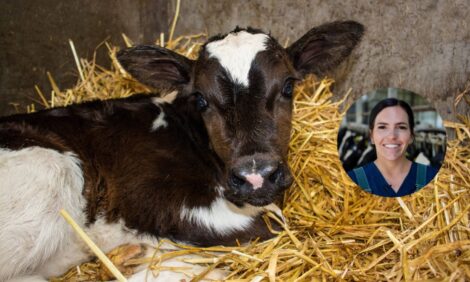



Researchers pave the way for supercows
Researchers from DTU use artificial intelligence, bioinformatics and gene sequencing to improve breeding programs with embryo transplantation for cows. Their research can result in healthier and stronger cows around the world.Researchers from the Technical University of Denmark (DTU) use artificial intelligence, bioinformatics and gene sequencing to improve breeding programs with embryo transplantation for cows. Their research can result in healthier and stronger cows around the world.
Breeding cows by transplanting fertilized eggs (embryo transplantation) makes it possible to combine the genetic characteristics of a given bull and a given cow in a surrogate mother. This makes it easier to achieve the desired result, which when it comes to cattle this is typically faster growth, better health in calves and a greater milk yield in the cows.

At the same time, better methods for cryo-preservation of embryos (e.g. fast freezing and better temperature control) mean that you can pick up the desired DNA for your future members of the herd anywhere on the globe - and without having to transport live animals. In other words, embryo transplantation makes it possible for everyone to have descendants of the best breeding animals.
For that reason embryo transplantation is popular - also in other areas, e.g. horse breeding. However, it is a relatively expensive way of breeding, and the success rate is therefore crucial to the overall value and prevalence of the method. Especially in developing countries, where embryo transplantation can have a major impact on food security, well-being and the fight against poverty – however farmers in developing countries often cannot afford many futile attempts to achieve pregnancy in surrogate mothers.
Therefore, it is important to select the right cows for the job as surrogate mother. Until now, the selection has mainly been based on a general observation of e.g. physical (phenotypic characteristics) and possibly also on a traditional gynecological examination. A method associated with some uncertainty. The authors of the article, postdoc Maria Belen Rabaglino and Professor Haja Kadarmideen however have now identified a method that has the potential to remove the uncertainty and change breeding practices globally.
Mucous membranes and artificial intelligence
A number of factors including hormones have an effect on whether it is easy or difficult to get pregnant; this is among other things because they affect the way the body's cells work. This applies i.a. in the lining of the uterus that interacts directly with the fertilized egg. The "activity" of the cells in the mucosa is therefore different in the animals where there is a high chance of pregnancy, and in those where there is not, but exactly how they vary, and which variations indicate what, was at the project start still unclear. Maria Belen Rabaglino and Haja Kadarmideen decided to research this in the expectation of using the results to develop a new and safer method of identifying the best surrogate mothers.
Initially, they wanted to identify the cell variations in the uterus that were important for achieving pregnancy by egg transplantation, and they therefore started looking for patterns in gene expression profiles (cells have the same genes, but depending on their activity they express them differently and this can be read in these profiles)
“We used advanced data integration and bioinformatics to prepare large amounts of (gene expression) data from 52 cows for machine learning (ML), a discipline in artificial intelligence, particularly well-suited for finding patterns in complex data. Then we used two types of ML algorithms and cross-validated the results to identify patterns in the gene expression profiles in mucous membranes that with at least 90% accuracy have resulted in successful transplants, ”says Maria Belen Rabaglino.
In this way, a pattern emerged from the project's "artificial brain": In connection with almost all successful pregnancies, the algorithms were able to find the same 50 gene expression profiles in the mucosa of the surrogate mother. The presence of precisely these biomarkers, as biological identifiers are often referred to, was in fact the case in 96.1% of cases. This means that by testing for specific gene expression profiles, you can reach a margin of error in your breeding program of less than 5%.
Easy to measure
In other words, the researchers have succeeded in creating a "simple" picture of a very complex reality using 50 biomarkers, and among other things because the uterine mucosa is easily accessible, it offers an easily measurable alternative to the assessments used today - which mostly rests on the veterinarian's experience and intuition. Haja Kadarmideen explains:
"Our study can greatly further the development of new methods for screening potential surrogate mothers, which will make it possible to select the right 'candidates' with much greater accuracy than today. For example, using a 'receptivity chip' based on these 50 biomarkers. It could potentially save cattle producers several million dollars by facilitating the selection of animals particularly suitable for fertilization by embryo transplantation."
Although cows and humans are very different, the authors believe that the 50 biomarkers identified in the project (in the form of gene expression profiles) in the future could be "translated" and applied to humans, where they could become a valuable tool in artificial insemination.


